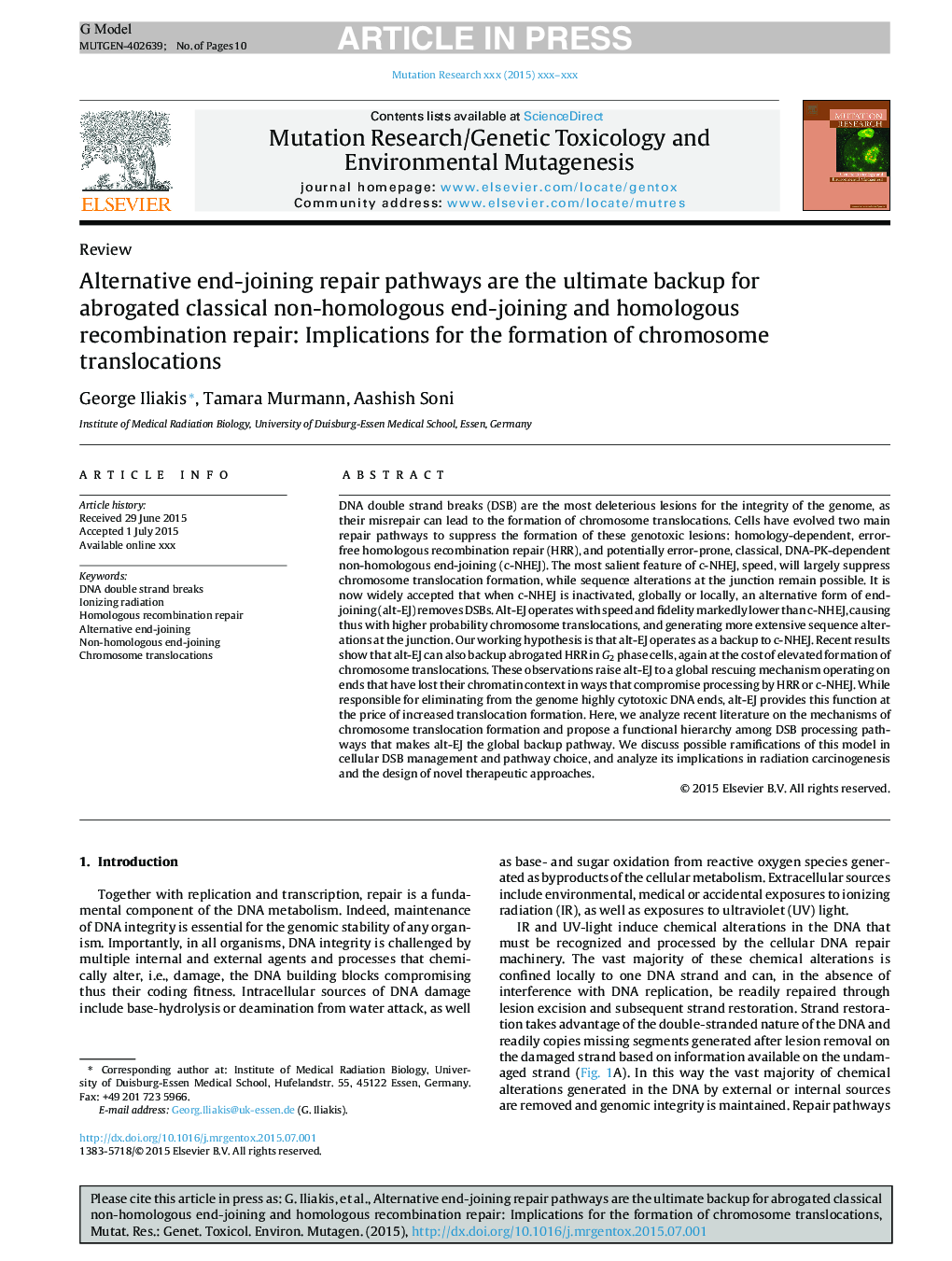| Article ID | Journal | Published Year | Pages | File Type |
|---|---|---|---|---|
| 8456333 | Mutation Research/Genetic Toxicology and Environmental Mutagenesis | 2015 | 10 Pages |
Abstract
DNA double strand breaks (DSB) are the most deleterious lesions for the integrity of the genome, as their misrepair can lead to the formation of chromosome translocations. Cells have evolved two main repair pathways to suppress the formation of these genotoxic lesions: homology-dependent, error-free homologous recombination repair (HRR), and potentially error-prone, classical, DNA-PK-dependent non-homologous end-joining (c-NHEJ). The most salient feature of c-NHEJ, speed, will largely suppress chromosome translocation formation, while sequence alterations at the junction remain possible. It is now widely accepted that when c-NHEJ is inactivated, globally or locally, an alternative form of end-joining (alt-EJ) removes DSBs. Alt-EJ operates with speed and fidelity markedly lower than c-NHEJ, causing thus with higher probability chromosome translocations, and generating more extensive sequence alterations at the junction. Our working hypothesis is that alt-EJ operates as a backup to c-NHEJ. Recent results show that alt-EJ can also backup abrogated HRR in G2 phase cells, again at the cost of elevated formation of chromosome translocations. These observations raise alt-EJ to a global rescuing mechanism operating on ends that have lost their chromatin context in ways that compromise processing by HRR or c-NHEJ. While responsible for eliminating from the genome highly cytotoxic DNA ends, alt-EJ provides this function at the price of increased translocation formation. Here, we analyze recent literature on the mechanisms of chromosome translocation formation and propose a functional hierarchy among DSB processing pathways that makes alt-EJ the global backup pathway. We discuss possible ramifications of this model in cellular DSB management and pathway choice, and analyze its implications in radiation carcinogenesis and the design of novel therapeutic approaches.
Keywords
Related Topics
Life Sciences
Biochemistry, Genetics and Molecular Biology
Cancer Research
Authors
George Iliakis, Tamara Murmann, Aashish Soni,
